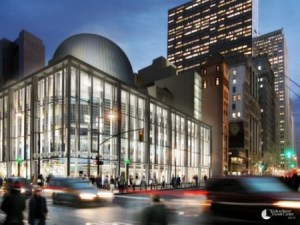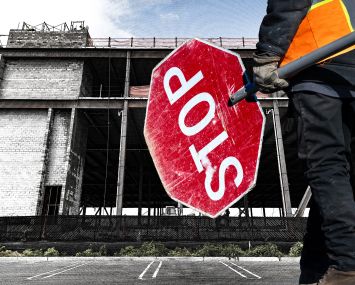Next Stop, Lower Manhattan: Fulton Center Transit Hub Chugs Forward
By Billy Gray March 19, 2013 11:00 am
reprintsAs Grand Central Terminal celebrates its centennial year as a crown of Midtown, the Fulton Center transit hub is being born three miles south.
It’s been a rocky delivery. Since 2004, when the Metropolitan Transportation Authority’s project—then known as the Fulton Street Transit Center—was introduced, its budget has ballooned from $750 million to $1.4 billion. And the completion date has been pushed back from 2007 to June of 2014.
Despite troubles common to a project of this scope, M.T.A. officials are optimistic that Fulton Center will transform commuting in lower Manhattan when it ultimately connects 11 previously separated subways lines and installs a pedestrian link to Santiago Calatrava’s World Trade Center PATH station, whose cost certain estimates put at $3.7 billion.
“Fulton Center is designed to create a focal point and an entranceway to Downtown,” said Aaron Donovan, a media liaison at the M.T.A. “Like Grand Central, it’s something everyone can gravitate toward. And lower Manhattan has not had that sort of landmark structure in the past.”

There are three major components of the project.
It aims to improve rail connections underground. Mr. Donovan said that the M.T.A. has “completely rehabbed” the mezzanine above the A and C lines and added elevators and escalators to the A/C, J/Z, 4/5, 2/3 and R stations. Transfer routes have been “changed significantly” and expanded.
Shopping will complement improved “seamless” transit. The M.T.A. is currently looking for a master lessee for above-ground retail tenants that will flank a central concourse. There will be around 65,000 square feet and three or four stories of retail space, adding to the flood of neighborhood shopping and leisure opportunities that will soon become available at Brookfield Place (formerly World Financial Center) and 1 World Trade Center.
Finally, preservation will go hand in hand with development as officials rehabilitate the Corbin Building—named for former Long Island Railroad President Austin Corbin—at 192 Broadway.
When completed, Fulton Center is expected to handle 300,000 people each day. Many of them will be commuters, and the station is expected to ease the rides of young workers from Brooklyn and Hoboken who work in the neighborhood’s swelling collection of new media and tech firms. Lower Manhattan’s growing residential population and evergreen tourist ranks will also benefit from a hub that Mr. Donovan envisions as “both a vital transit nexus and a destination in its own right.”
Still, while the road toward a functional Fulton Center has smoothed, there may be a few bumps ahead for what The New York Post’s Steve Cuozzo called the “$1.4 billion subway station to nowhere.” Last year, Manhattan Borough President Scott Stringer said the M.T.A. was “throwing precious dollars at projects like the Fulton Street station,” which “will do nothing to add to capacity when work finally ends.”
That was a turnaround from 2008, when Mr. Stringer called Fulton Center a project of “monumental importance.” And it dragged the hub into the catty political arena during a mayoral election year, despite its potential as an improved gateway to City Hall and its environs.


